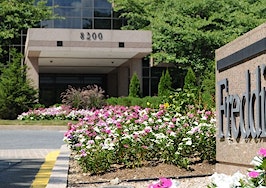Mortgage modifications increased significantly in the second half of 2012, reversing a two-year decline, according to a report released today by real estate data firm Lender Processing Services.
LPS said the majority of the increases in the third and fourth quarters of 2012 were proprietary modifications made outside the government-backed Home Affordable Modification Program (HAMP).
After making 497,000 mortgage modifications in the first half of 2010, loan servicers dialed back relief efforts, with loan mods dropping to 199,000 in the first half of 2012, according to LPS. But in the second half of 2012 they increased by 41 percent to 280,000, the firm’s data showed.
The increase occurred as major lenders part of the robo-signing settlement provided billions in mortgage relief to beleaguered homeowners in order to atone for illegal foreclosures.
Partly due to an increase in modifications, the number of delinquent loans that became current in February rose by 9 percent, according to LPS.
While that increase was largely a seasonal one, the share of loans that were three-to-five months delinquent and foreclosure-initiated that recovered was unusually high, LPS said. The higher cure rate of those loans was likely a result of changes made to the the FHA’s Loss Mitigation Home Retention Options late last year.
The changes were made to streamline and expand mortgage relief offered by the FHA. FHA-loan cures spiked 29 percent from January to February, LPS reported.
“Given the current FHA activity, along with the FHFA’s recent announcement of its Streamlined Modification Initiative, we could see continued strength in modification volumes in the future,” said LPS Applied Analytics Senior Vice President Herb Blecher in a statement.
The report also found that, even as foreclosure and delinquency rates continue to improve, a larger share of the foreclosure inventory is associated with loans that have been delinquent for extended periods of time.
Forty-two percent of the 1.5 million loans that were 90 days late or more in February have been so for more than a year. That’s up from 22 percent in January of 2010, when the number of loans that were 90 days late or more hit a peak of 2.9 million.



